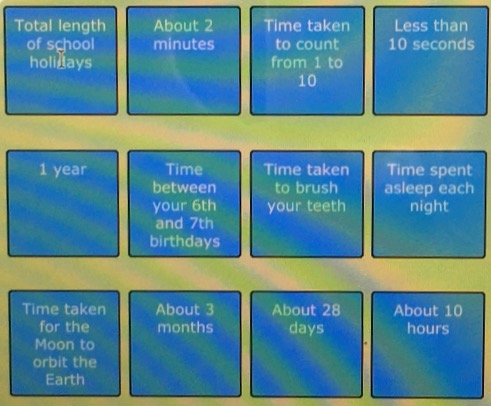Or search by topic
Number and algebra
Geometry and measure
Probability and statistics
Working mathematically
Advanced mathematics
For younger learners
How Long Does it Take?



- Problem
- Student Solutions
- Teachers' Resources
Margaux from St Thomas More's Catholic Primary School managed to complete it.
Vihaan from KHPS King Henry VIII School wrote:
How long does it take to brush your teeth? One of my strategies is to start from the middle then do the four corners. After that I fill in the gaps from the edges.
Another one is doing the outside square then doing the inside square. With my strategy I scored 320 and none were by luck or next to each other. The first time playing against the clock the time was 0.44. The second time against the clock it was 0.52. The third time against the clock it was 0.54.
Freddy from Pickhurst wrote the following and showed the screen he got:
When I was playing this game the first thing that I did was choose a random card, read it, work out the answer, memorise what was written on the card and then remember where the card was. I did that every turn and matched up the cards.

You may also like
Times
Which times on a digital clock have a line of symmetry? Which look the same upside-down? You might like to try this investigation and find out!
Clock Hands
This investigation explores using different shapes as the hands of the clock. What things occur as the the hands move.
Ten Green Bottles
Do you know the rhyme about ten green bottles hanging on a wall? If the first bottle fell at ten past five and the others fell down at 5 minute intervals, what time would the last bottle fall down?

